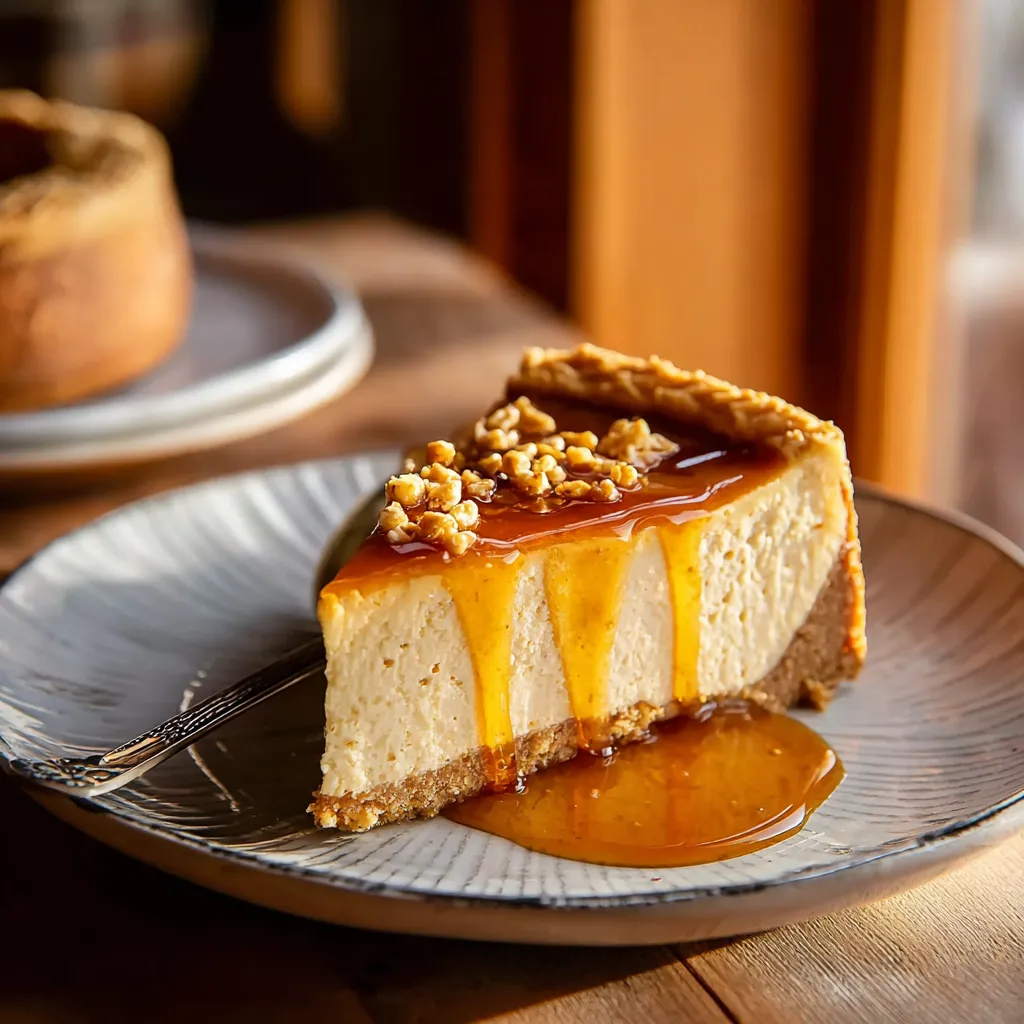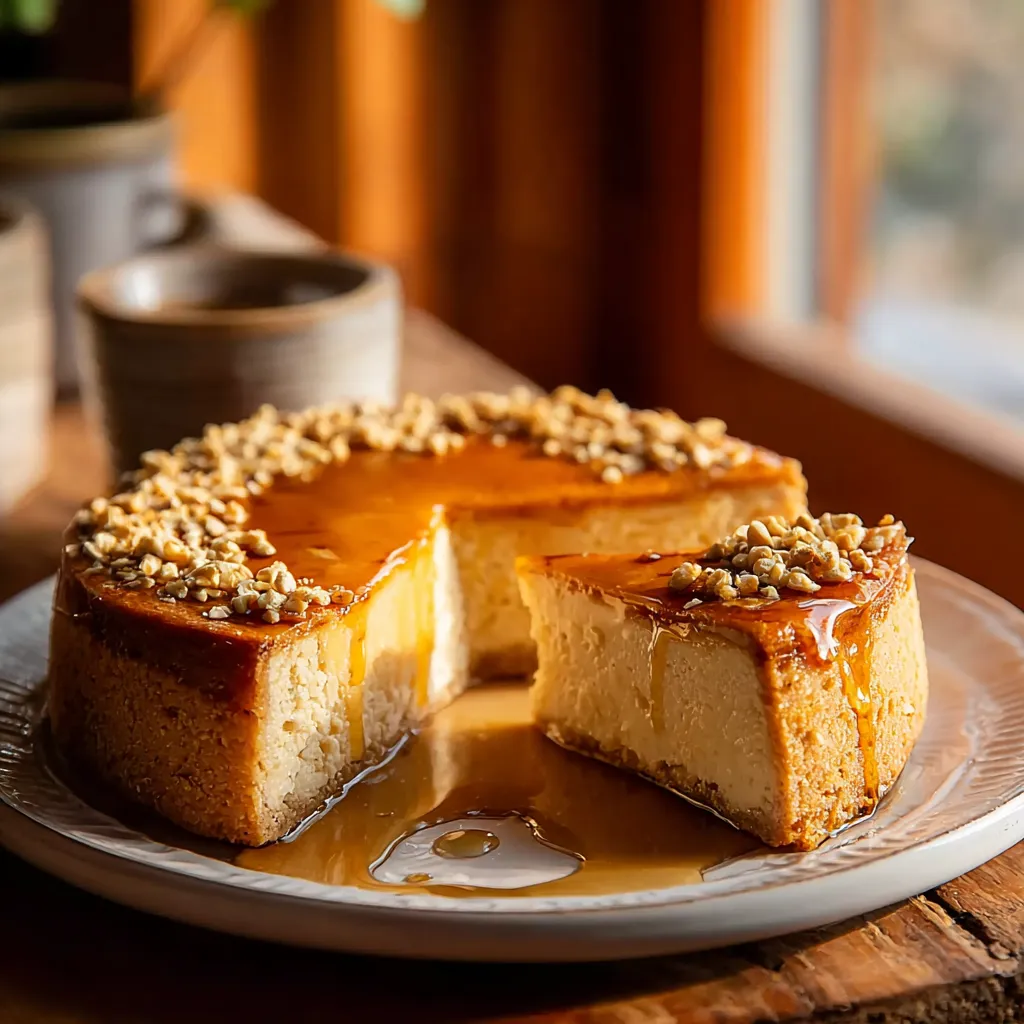 Save
Save
This hearty Greek Melopita has been my family's go-to dessert for special occasions, combining the delicate crunch of phyllo with a velvety semolina filling that melts in your mouth with every bite.
I first made this honey pie for my daughter's birthday after a memorable trip to Santorini, and now it's requested at every family gathering. The combination of crispy phyllo and creamy filling never fails to transport us back to those sunlit Mediterranean afternoons.
Ingredients
- Phyllo dough sheets: Create the delicate flaky layers that make this dessert so special. Look for them in the freezer section and ensure they're completely thawed before using.
- Unsalted butter: Adds richness and helps achieve that golden exterior. Use high quality European butter if available for the best flavor.
- Semolina flour: Provides the unique texture to the filling. Choose fine semolina for the smoothest result.
- Large eggs: Bind everything together and create that custard-like consistency. Room temperature eggs incorporate better.
- Granulated sugar: Sweetens the filling perfectly. Traditional recipes sometimes use less as the honey provides additional sweetness.
- Whole milk: Creates the creamiest filling. The fat content is important here for the proper texture.
- Ground cinnamon and nutmeg: Bring warmth and depth. Freshly grated nutmeg makes a noticeable difference.
- Honey: The crowning glory. Select a high quality variety like Greek thyme honey for authentic flavor.
- Toasted sesame seeds: Add a nutty contrast and visual appeal. The toasting step is worth the extra minute.
Step-by-Step Instructions
- Prepare the Phyllo Base:
- Work quickly but carefully with the delicate phyllo sheets, keeping unused ones covered with a damp towel to prevent drying. Brush each sheet generously with melted butter before layering in your baking dish. The butter not only adds flavor but ensures that gorgeous golden color and crispy texture. Press down gently between layers to remove air pockets and create a solid base.
- Mix the Semolina Filling:
- Combine your semolina flour, eggs, sugar, milk, and spices in a large bowl, whisking thoroughly until completely smooth. The mixture should have a pourable consistency similar to a thick pancake batter. Make sure all the semolina is fully incorporated to avoid lumps in the final dessert. This filling will transform during baking into a creamy, custard-like center that perfectly balances the crisp phyllo.
- Assemble and Layer:
- Pour the semolina mixture carefully over your prepared phyllo base, using a spatula to ensure it spreads evenly to all corners. Top with remaining phyllo sheets, brushing each with butter as you go. Score the top layer with a sharp knife before baking to make serving easier later and to allow some of the honey to seep into the dessert. This traditional technique ensures each slice will be perfect.
- Bake to Perfection:
- Place your assembled pie in the preheated oven and bake until the top turns a beautiful golden brown and the filling is completely set. You can test doneness by inserting a knife in the center, it should come out mostly clean with perhaps a few moist crumbs. The aroma filling your kitchen will be absolutely irresistible as the butter, honey and spices meld together.
- Finish with Honey Drizzle:
- While the pie is still warm from the oven, generously drizzle with warmed honey, allowing it to seep into the scored lines and create that signature sticky sweet finish. Sprinkle with toasted sesame seeds for a beautiful presentation and subtle nutty flavor that complements the sweetness perfectly. Let the pie rest briefly before serving to allow the flavors to fully develop.
 Save
Save
My grandmother always insisted on using orange blossom honey for her melopita, claiming it added a subtle floral note that made her version special. Years later, I discovered she was absolutely right, and now I keep a jar specifically for this recipe. The way it perfumes the kitchen as it warms is almost as delightful as the dessert itself.
The Perfect Texture Balance
Achieving the ideal contrast between crispy phyllo and creamy filling comes down to timing. Too long in the oven and the filling becomes dry, too little time and it remains too soft. Watch for that golden color on top and slight pulling away from the sides of the pan. Remember that the dessert will continue cooking slightly after removal from the oven, so err on the side of caution if you prefer a more custardy center.
Historical Roots
Melopita has ancient origins throughout the Greek islands, with each region putting their own spin on this beloved dessert. On Sifnos, they make a crustless version resembling a cheesecake, while in other areas, the phyllo layers are non-negotiable. The common thread is honey, which has been a prized ingredient in Greek cuisine since antiquity. In fact, honey was so valued in ancient Greece that it was used as an offering to the gods, making this dessert not just delicious but culturally significant.
Serving Suggestions
Transform your melopita into a complete dessert experience by serving it alongside a small scoop of vanilla ice cream or thick Greek yogurt for a temperature and texture contrast that elevates the entire dish. For special occasions, consider garnishing with fresh seasonal berries or a light dusting of powdered sugar just before serving. A small glass of Vinsanto, a traditional Greek dessert wine, makes the perfect adult accompaniment to bring out the honey notes.
Recipe FAQs
- → Can I make Melopita ahead of time?
Yes! You can prepare Melopita up to 24 hours in advance. Store it covered at room temperature and add the honey drizzle just before serving for the best texture and flavor. For longer storage, refrigerate for up to 5 days and warm slightly before serving.
- → What's the best honey to use for Melopita?
Traditional Greek honey varieties like thyme or wildflower honey work beautifully in Melopita, offering complex floral notes. However, any good-quality honey will enhance the dessert. For an authentic touch, consider Greek honey if available, as its distinctive flavor complements the dessert perfectly.
- → Can I substitute the semolina flour?
While semolina creates the authentic texture, you can substitute with fine cornmeal or regular all-purpose flour in a pinch. The texture will be slightly different—semolina provides that distinctive grainy quality that absorbs the honey beautifully. If using all-purpose flour, reduce the amount by about 2 tablespoons.
- → Why is my phyllo dough cracking?
Phyllo cracks when it dries out too quickly. Keep unused sheets covered with a damp (not wet) kitchen towel while working. Work efficiently but don't rush. Ensure your melted butter is warm but not hot, and apply it generously to each layer. Room temperature phyllo is also less likely to crack than cold phyllo.
- → Is Melopita supposed to be soggy in the middle?
No, properly baked Melopita should have a custard-like center—moist but set. If it's soggy, it likely needs more baking time. The filling should be firm enough to hold its shape when cut. Remember that it will continue to set slightly as it cools. The bottom phyllo should be crisp, while the filling remains creamy.
- → Can I freeze leftover Melopita?
Yes, Melopita freezes well. Cut into individual portions, wrap tightly in plastic wrap followed by foil, and freeze for up to one month. Thaw overnight in the refrigerator and reheat in a 300°F oven for about 10 minutes to restore some crispness to the phyllo before serving.
